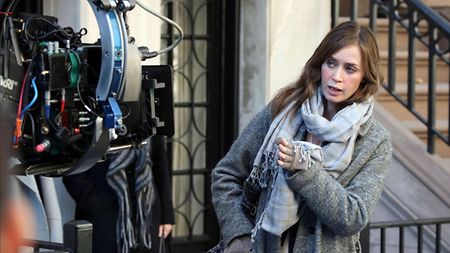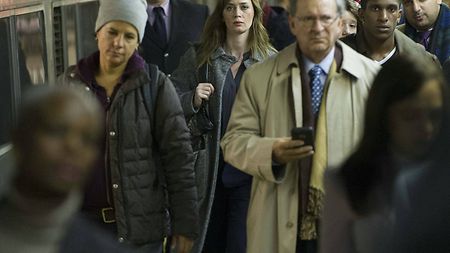In "The Girl on the Train," alcoholic Rachel Watson (played by Emily Blunt) is devastated by the end of her marriage, obsessively taking a train passing her old home, day after day. She begins observing a beautiful woman Megan (Hayley Bennett) two doors down from her former house, and imagining Megan’s life with her husband as the perfect life she longs for. One day, she sees something she shouldn’t have seen and starts drinking again. It all comes to a head inside a tunnel. Rachel blacks out, and when she comes to, Megan is missing.
Tate Taylor, an actor who has also directed ("Get On Up," "The Help"), helmed the psychological thriller, which was shot by cinematographer Charlotte Bruus Christensen (§Far From The Madding Crowd," "The Hunt"). When Christensen first sat down with Taylor to talk about the look, they agreed it should be “very truthful” and “realistic.” “Rachel’s world isn’t very pretty, so it can’t be too commercial,” she says. “But we are making a movie, so it was a balance between finding the cinematic look but keeping it real and raw.” Producers referenced old Hitchcock thrillers. “`Rosemary´s Baby` was another movie we spoke about in terms of a thriller,” she recalls.
The next task was choosing the camera and lenses. “Obviously there was a discussion of whether to shoot film or digital,” she says. “I was fighting a bit for film, because we have such a raw-looking character, and I thought film would be a good option to keep the cinematic look.” The production shot 35mm on the ARRICAM, with a full range of Kodak film stocks. The complete camera, lighting and grip package was supplied by ARRI Rental NY. “We were also lucky to find a good team that was familiar with film,” says Christensen. “People aren’t being trained the same way anymore and it’s not easy to find film loaders nowadays.”



